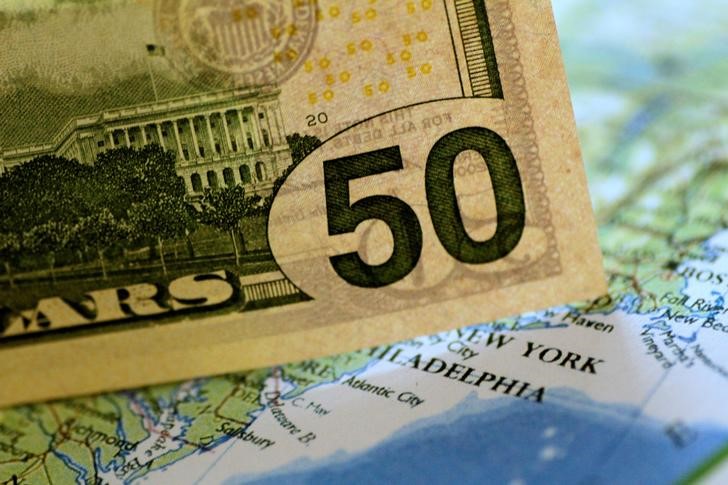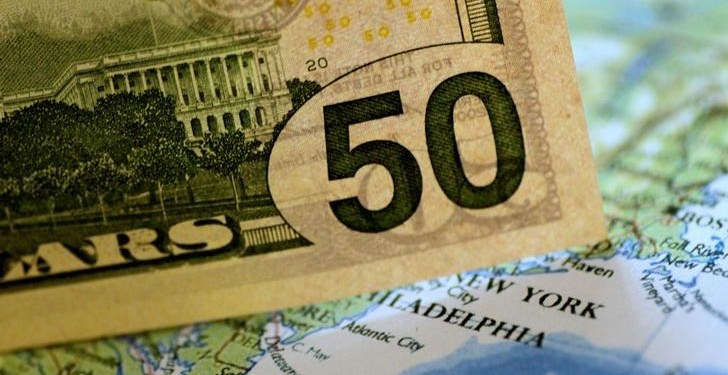 © Reuters. Pedestrians walk past the Bank of England in the City of London
© Reuters. Pedestrians walk past the Bank of England in the City of LondonBy David Milliken
LONDON (Reuters) – Britain’s central bank is about to shed more light on a concept that may explain why it thinks borrowing costs must rise even as the economy grows only slowly – “R-star” (or “R-dagger”), the ‘equilibrium’, ‘neutral’ or ‘natural’ interest rate.
While these terms may be familiar to economists, the man in the street could be left scratching his head as he tries to work out how far the Bank of England plans to increase rates in the next few years.
Bank of England Governor Mark Carney and other top officials say they need to tighten monetary policy because Britain’s economy cannot cope with even its current sluggish growth without generating too much inflation.
Most economists polled by Reuters expect the Bank to raise its benchmark rate to 0.75 percent next Thursday, passing a milestone by taking it above 0.50 percent for the first time in more than nine years.
But there is much more debate about how fast it will raise borrowing costs after that, given a lack of clear signs of home-grown inflationary pressure — with wages growing more slowly than before the financial crisis — and the economy facing headwinds from the approach of Brexit.
This is where R-star comes in. The term itself is simple enough: it represents the level of interest rates set by a central bank that will keep inflation and growth rates stable when the economy is running at full capacity.
The BoE has long said it expects any increases in interest rates to be limited and gradual. By putting a number on ‘R-star’ for the first time alongside its rate decision on Thursday, it may give a clearer indication of where it thinks borrowing costs need to head in the longer term — though if Britain crashes out of the European Union next March, all bets are off.
“(This) will help frame discussion of how accommodative policy is,” said David Owen, an economist at investment bank Jefferies. “It could also be used to justify a rate rise.”
Policymakers at the U.S. Federal Reserve are used to discussing the neutral level of interest rates, and they give individual forecasts of where they see rates heading. But such public debate is much rarer at other major central banks.
‘R-star’ appears in most economic models for setting interest rates and has its roots in the 19th-century work of Swedish economist Knut Wicksell on the natural rate of interest.
The further interest rates are below their ‘natural’ level, the more stimulus they offer to growth, and the more likely they are to contribute to higher inflation if the economy is close to full capacity.
R-STAR CENTRAL BANKERS
Based on statements by BoE policymakers and analysis of BoE growth, inflation and spare capacity forecasts, estimates for r-star range from minus 0.5 to zero percent, according to economists at HSBC, JP Morgan and consultancy Heteronomics.
Adjusted for the BoE’s 2 percent inflation target, this implies that a level of Bank Rate of 1.5-2.0 percent will ultimately be needed to keep inflation steady.
Perhaps coincidentally, 1.5 percent also matches the level at which the BoE unexpectedly said last month it would begin to consider selling some of the 435 billion pounds of government bonds it amassed as part of its attempts to shore up Britain’s economy over the 10 years since the financial crisis.
JP Morgan economist Allan Monks said the likely ‘neutral’ range was lower than financial market forecasts for Bank Rate. They mostly see it struggling to get above 1 percent over the next three years, reflecting concerns about a disruptive Brexit.
“But without those risks crystallizing, the implication of the August Inflation Report is likely to be that rates will need to rise several times more,” he said.
Britain is due to leave the European Union in March next year but it remains at odds with Brussels over key parts of its future relationship with the bloc.
After disquiet from some economists at Carney’s previous attempts to give ‘forward guidance’ on interest rates, he is likely to stress uncertainties around the new estimate, and that it is not a target for the BoE.
“It demonstrably wants to provide some guidance, else it may as well have not bothered saying anything. But the Monetary Policy Committee also won’t want to imply excessive confidence lest it strengthens the charge that it’s an unreliable partner,” Heteronomics’s Philip Rush said.
Carney said in May the BoE would give a range of estimates for the ‘equilibrium rate’ and that it would change over time.
He also noted that Britain was exposed to rising borrowing costs overseas as the world economy grows more strongly.
That means that even keeping rates on hold would be increasingly stimulative for Britain’s economy, said Elizabeth Martins, an economist at HSBC.
“To take an extreme example, if the MPC concluded the natural rate was set to rise by 1 percentage point over the next two years, we could look forward to a much steeper path for Bank Rate,” she said.
Source: Investing.com




















